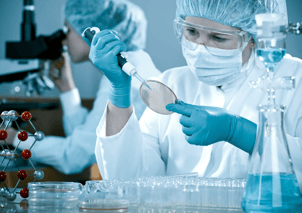 In the complex world of laboratory automation, machines, software and data work together seamlessly to produce precise and efficient results. Entities" play a crucial role in this network. In this context, entities are defined units of data or information that are used in automated laboratory processes. They can be as simple as a single measured value or as complex as a complete patient profile.
In the complex world of laboratory automation, machines, software and data work together seamlessly to produce precise and efficient results. Entities" play a crucial role in this network. In this context, entities are defined units of data or information that are used in automated laboratory processes. They can be as simple as a single measured value or as complex as a complete patient profile.
Entities are essential for increasing the efficiency of laboratory processes. By identifying and categorizing data into entities, laboratory systems can process information faster and more accurately. For example, an automated system can recognize an entity defined as "blood glucose level" and process it accordingly to provide accurate test results.
Key to increased accuracy in lab processes
In addition to efficiency, entities also contribute to the accuracy of laboratory processes. By using entities, laboratory systems can isolate and analyze specific data points, reducing the potential for error. For example, a system that recognizes an entity as "patient age" can use this information to account for age-specific reference ranges for test results.
In addition, entities enable improved data management and analysis. By categorizing data into specific entities, laboratory systems can identify patterns and trends that can be used to improve laboratory processes and procedures. Overall, entities help improve the quality and reliability of laboratory results, ultimately leading to improved patient care.
Entities in laboratory automation: a paradigm shift.
The integration of entities into laboratory automation has led to a paradigm shift in the way laboratories operate. By identifying and categorizing data into entities, laboratory systems can process information faster and more accurately. This has not only increased efficiency, but also improved the accuracy of results.
The use of entities allows labs to process and analyze a larger amount of data. This has led to a data boom that has opened the door for labs to use advanced data analysis and interpretation techniques. These techniques allow labs to identify patterns and trends in data that were previously invisible.
Looking to the future
The future of entities in laboratory automation is promising. As technology evolves and automated systems become more widely accepted in laboratories worldwide, the role of entities in laboratory automation will continue to grow.
The next generation of laboratory automation systems is expected to rely even more heavily on entities to accomplish complex tasks. This could include the development of AI-driven systems capable of recognizing and interpreting entities to enable even more accurate and efficient laboratory processes.
If you would like to learn more about the role of entities in lab automation and how iVention can help you optimize your lab processes, please don't hesitate to contact us. We look forward to working with you and taking your lab processes to the next level.
